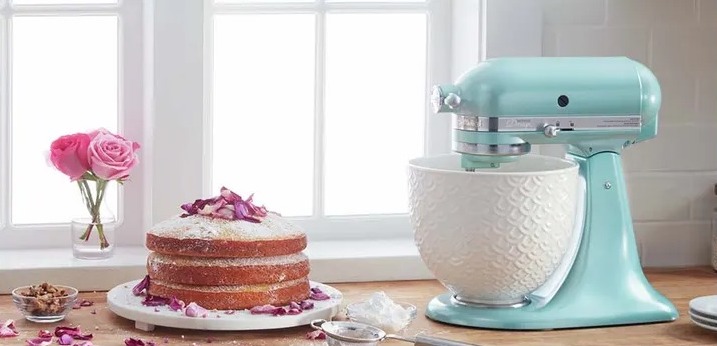
When it comes to small appliances for the kitchen, one of the most versatile ones you can own is a stand mixer. These countertop appliances can perform many tasks in the kitchen. Often, these are tasks that would be far more arduous and time-consuming if attempted by hand.
Stand Mixers Buying Guide Quick Reference Handout
Stand mixers are available from many leading brands like KitchenAid, Cuisinart, and Hamilton Beach. They come in different sizes, styles, and even colours to match every kitchen décor. The latest models have stepped up the game in not only style but also power and versatility. In this buying guide, we’ll walk you through everything you need to know about stand mixers.
Table of Contents
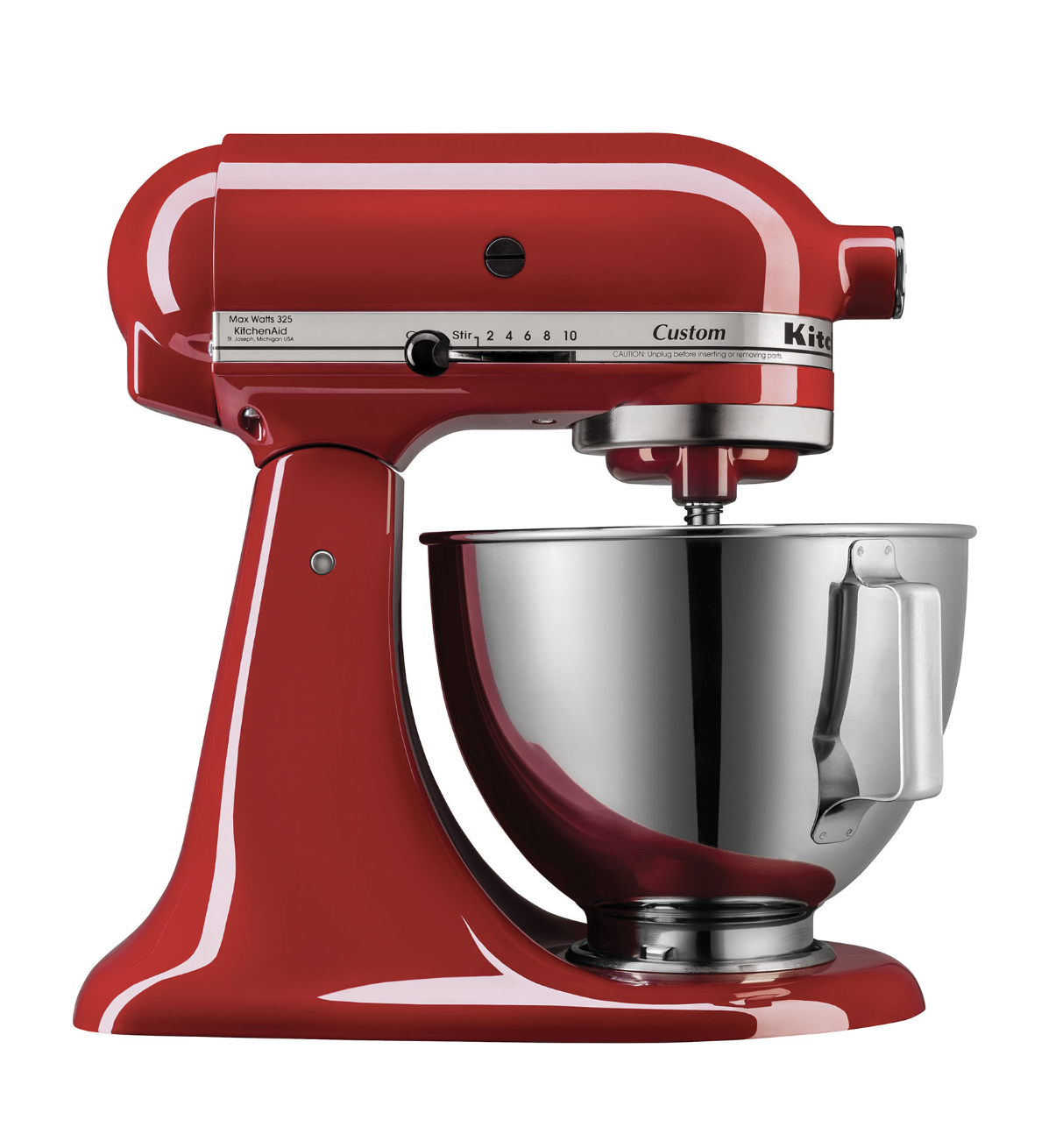 What is a stand mixer?
What is a stand mixer?
A stand mixer is a heavy-duty electric mixer attached to a stand that sits on a kitchen countertop. It plugs into the wall and comes with a mixing bowl and mixing attachments. These can perform various mixing, whipping, and even kneading tasks.
They typically have different speeds, starting from a basic and low-powered stir up to a vigorous level 10 (or so) speed for whipping butter or cream. Add the ingredients and clip on the appropriate mixing attachment. Secure the bowl, then turn it on and let it do its thing. The mixing attachment will move in a circular fashion around the bowl, ensuring an even and consistent mix.
Some stand mixers have tilt heads so you can easily add ingredients throughout the process. This is useful when mixing a recipe that requires that you add flour at a half cup at a time, or after beating sugar and butter with eggs. Some can also work with attachments, which we discuss in greater detail below.
Stand mixers are made of heavy-duty material like steel and come in matte or gloss finishes that add a touch of class and elegance to the kitchen.
How is a stand mixer different from a handheld mixer?
Stand mixers and handheld mixers effectively do the same thing. But there are some notable differences. Stand mixers are more powerful with more speed options. They can also run independently. Turn one on to the desired speed and leave it to mix, beat, or whip while you tend to other tasks.
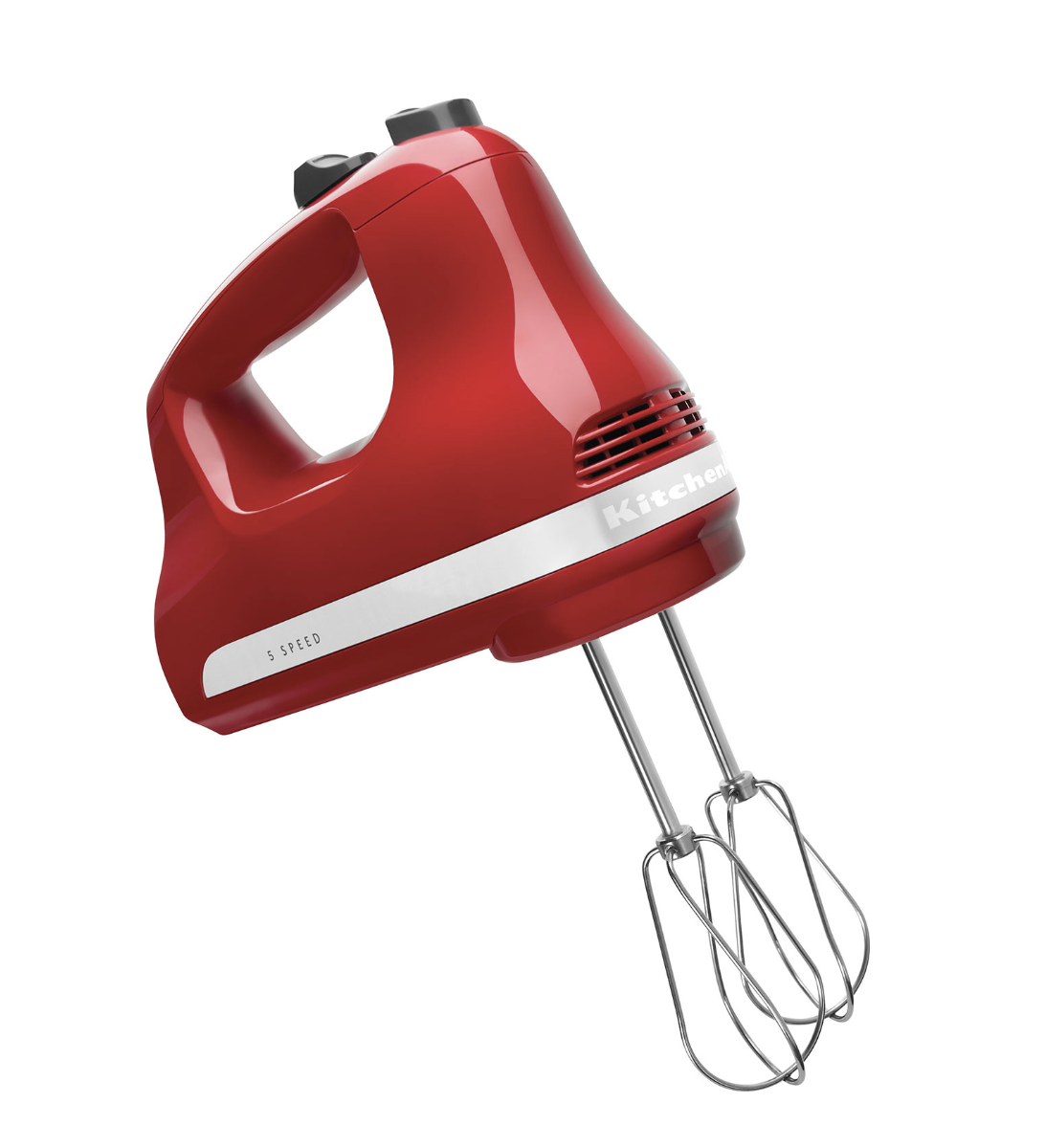 A hand mixer, on the other hand, requires that you hold it over the bowl while mixing. Gradually move it around or hold it steady, depending on the desired outcome. This requires not only more attention but can be more difficult for those who suffer from sore muscles or conditions like arthritis. For recipes where mixing for minutes on end is required, attempting this with a hand mixer can be tiring. Plus, having to hold the mixer means you can’t multitask while mixing.
A hand mixer, on the other hand, requires that you hold it over the bowl while mixing. Gradually move it around or hold it steady, depending on the desired outcome. This requires not only more attention but can be more difficult for those who suffer from sore muscles or conditions like arthritis. For recipes where mixing for minutes on end is required, attempting this with a hand mixer can be tiring. Plus, having to hold the mixer means you can’t multitask while mixing.
Stand mixers usually come with more attachments than just two beaters that click into the bottom like a handheld mixer. You can, however, get less powerful stand mixers that come with the same two beater attachments but work independently. Those lower-end mixers simply remove the necessity to use your hands but aren’t as powerful.
When you’re dealing with heavier, denser doughs, batters, and mixes, you’ll want a stand mixer that can handle these tougher jobs.
So, when would you use a handheld mixer? You might find a handheld mixer useful for tasks when you only need to mix for a short period of time at low power, like with cheesecake batter. Of course, they are also smaller and easier to tuck away in a cupboard once done so they are good options for small kitchens for limited jobs.
Benefits of a stand mixer
There are many benefits to owning and using a stand mixer.
You can make big batches
With a stand mixer that comes with an at least 4.5-quart bowl, you can whip up big batches of batter for everything from homemade cookies to several-tiered cakes, multiple loaves of bread, pizza crusts, and more. When using a stand mixer to do things like shred cooked chicken for tacos, a decent-sized bowl is large enough to accommodate ingredients for the entire family, parties, and large groups.
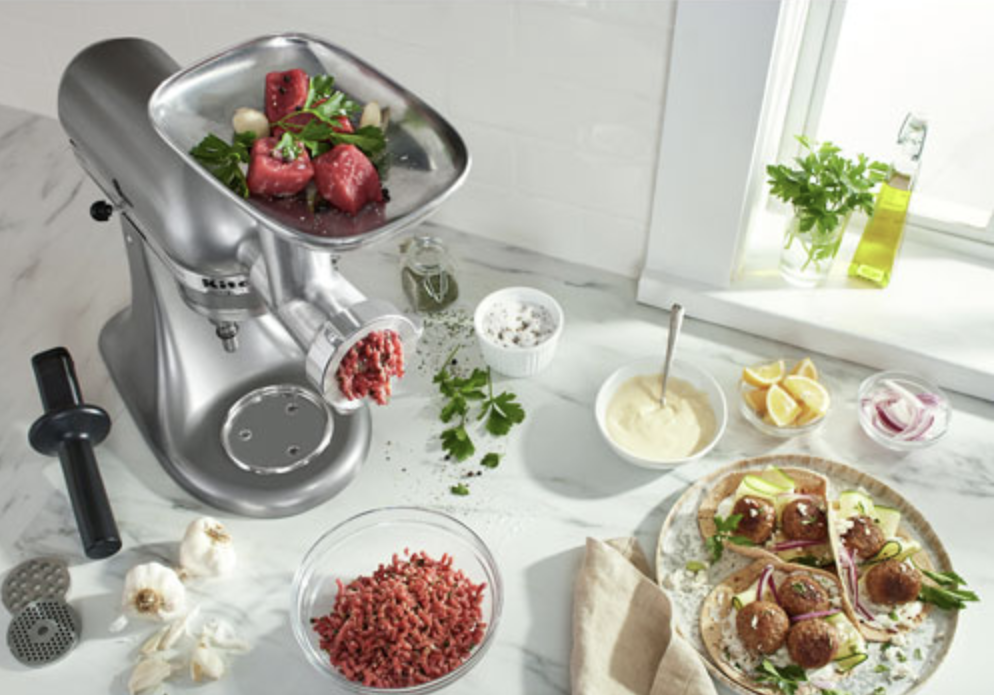 Expanded functions with attachments
Expanded functions with attachments
Stand mixers from brands like KitchenAid work with various attachments that expand their functionality even further. With the KitchenAid Attachment Hub at the front of every KitchenAid stand mixer, for example, you can connect optional attachment accessories to do everything from grind meat to cut homemade pasta, spiralize vegetables, or even make shaved ice. With the ice cream bowl attachment, you can also whip up a batch of homemade ice cream for a sweet treat.
Can accomplish many tasks
As noted, there are so many things a stand mixer can do that go above and beyond the usual ones we think about related to mixing, whipping, and kneading. This includes tasks like mashing potatoes, scrambling eggs, emulsifying salad dressing, and even whipping aquafaba for those who follow a vegan diet.
Multitask
As noted, because stand mixers are simply turned on and set to the desired speed, you can leave them to mix and tend to other tasks. This might be prepping other ingredients for a recipe. If the mixer needs to run for a significant amount of time, you might even have a shower, throw in a load of laundry, or tend to some office work. You can set a timer then turn it off when needed. Even if the mixer is only running for a few minutes at a time, the fact that you can empty the dishwasher or do other tasks while it’s going is a benefit.
Professional level results
With a quality stand mixer, you can achieve professional level results while saving time in the process. Some recipes note if mixing time is by hand or stand mixer. If not, you can adjust depending on the speed you use. With practice, recipes, and experience, a stand mixer can help turn even the most novice cook into an expert home baker.
Common attachments with a stand mixer
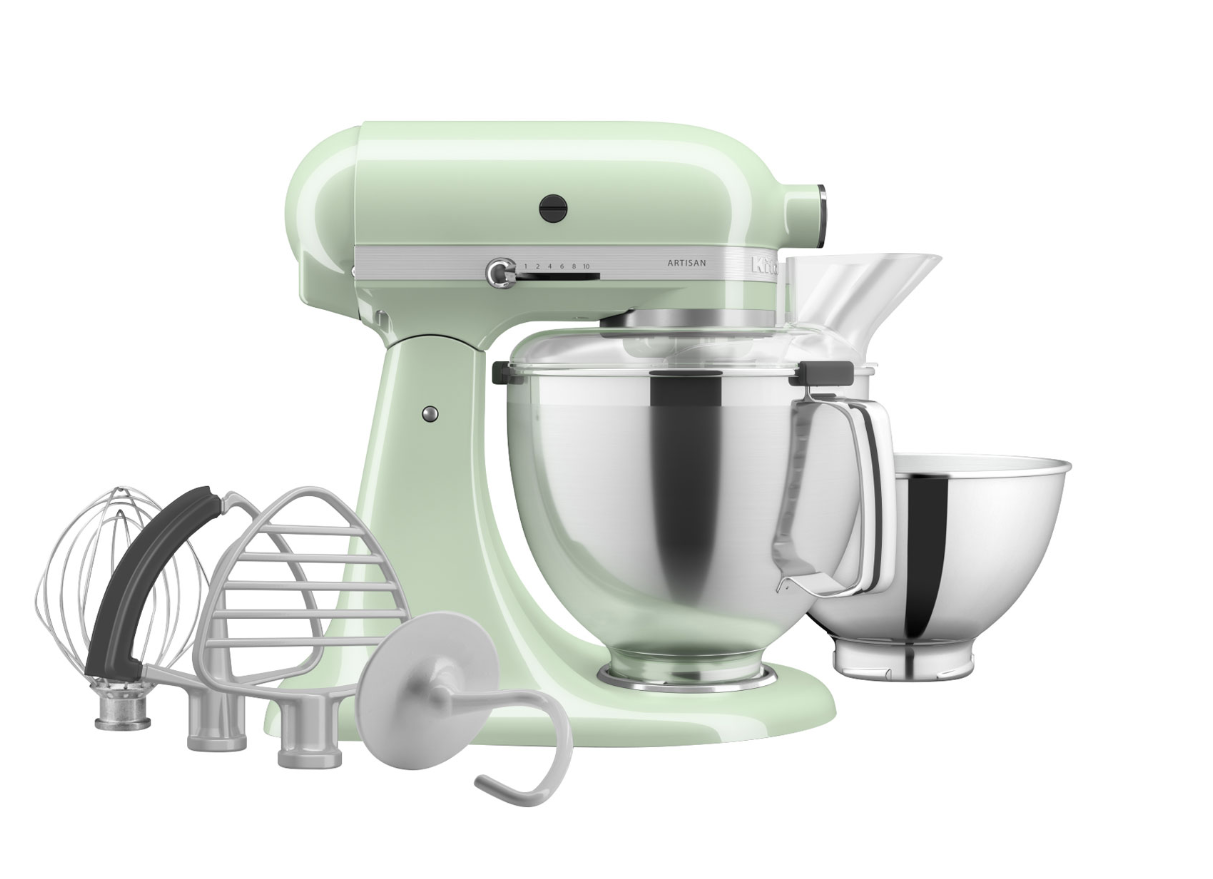
Stand mixers typically come with a bowl and three main stand mixer attachments. Some might come with others in a special bundle or premium accessory pack as well.
Mixing bowl – Every stand mixer comes with a mixing bowl, which ranges from 3.5 quarts up to 6 quarts in size. They are typically made of stainless-steel and specifically designed to fit that brand and model of stand mixer.
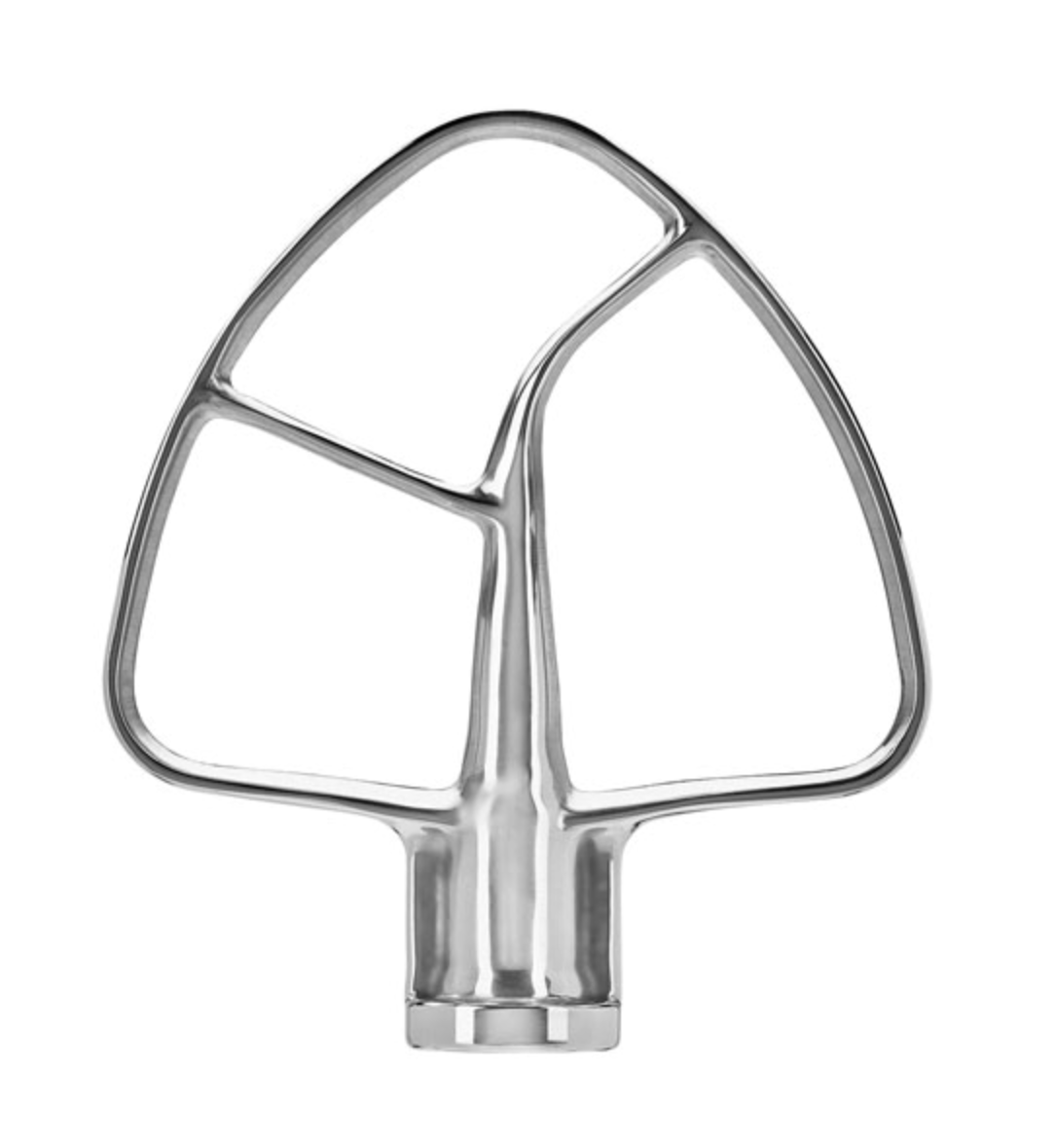 Flat beater – The flat beater is shaped like a leaf with grooves that help mix the ingredients sufficiently, properly incorporating everything. These are used for mixing things like cookie and cake batter, frosting, shredding pulled proteins like pork and chicken, blending, mashing, and incorporating ingredients. Some stand mixers come with or offer a separate type of flat beater with a silicone scraper on one side. Bakers love this option as it helps scrape batter from the sides of the bowl while it mixes so you don’t have to stop the mix and do this manually as needed.
Flat beater – The flat beater is shaped like a leaf with grooves that help mix the ingredients sufficiently, properly incorporating everything. These are used for mixing things like cookie and cake batter, frosting, shredding pulled proteins like pork and chicken, blending, mashing, and incorporating ingredients. Some stand mixers come with or offer a separate type of flat beater with a silicone scraper on one side. Bakers love this option as it helps scrape batter from the sides of the bowl while it mixes so you don’t have to stop the mix and do this manually as needed.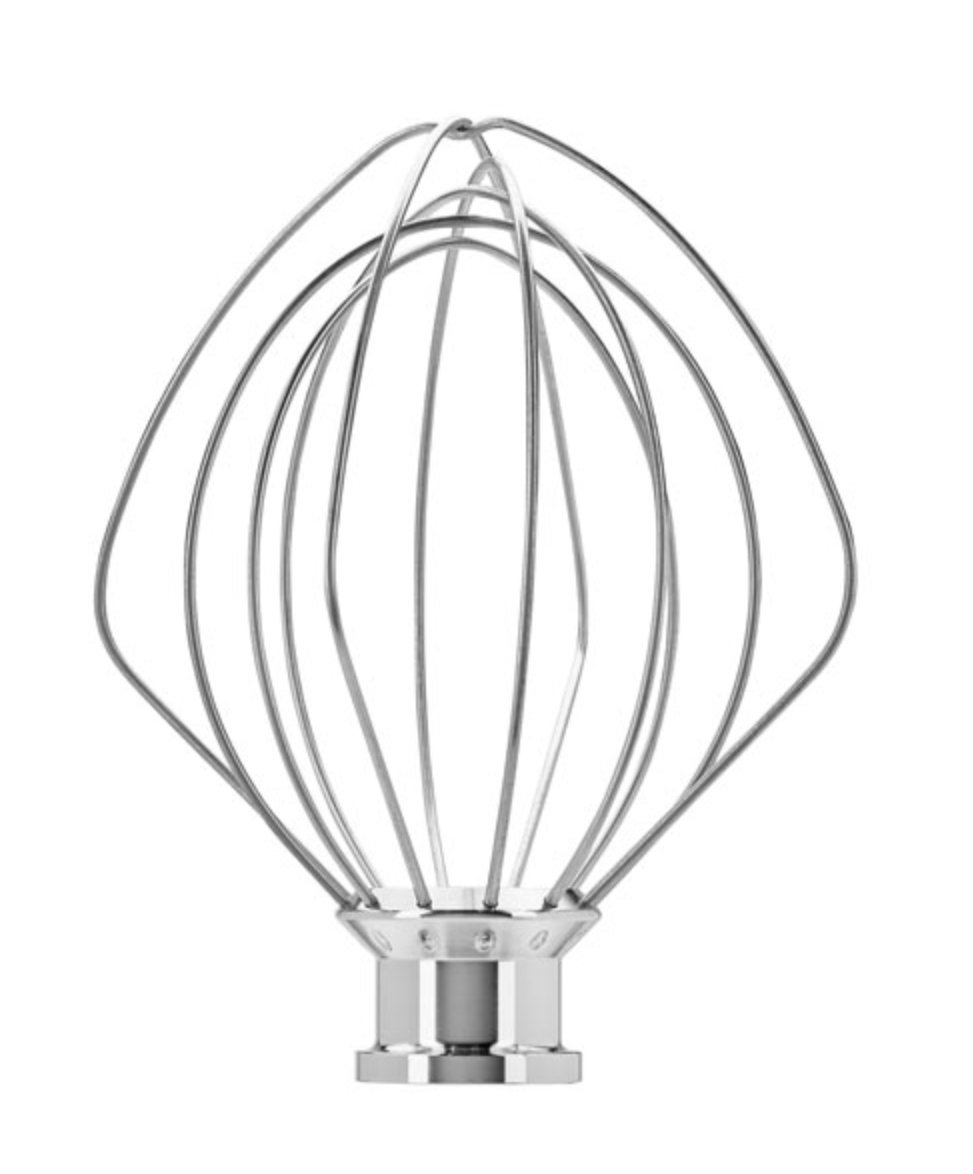
Whisk – The whisk attachment is rounded in size with a hollow middle. It’s designed for beating ingredients like eggs, cream, butter, or even marshmallow to make your own homemade fluff. It’s similar to a handheld whisk, but with the power of a stand mixer behind it, it can perform tasks much more quickly and efficiently. If you’re making meringue and need those soft peaks, for example, a whisk attachment is what will achieve that.
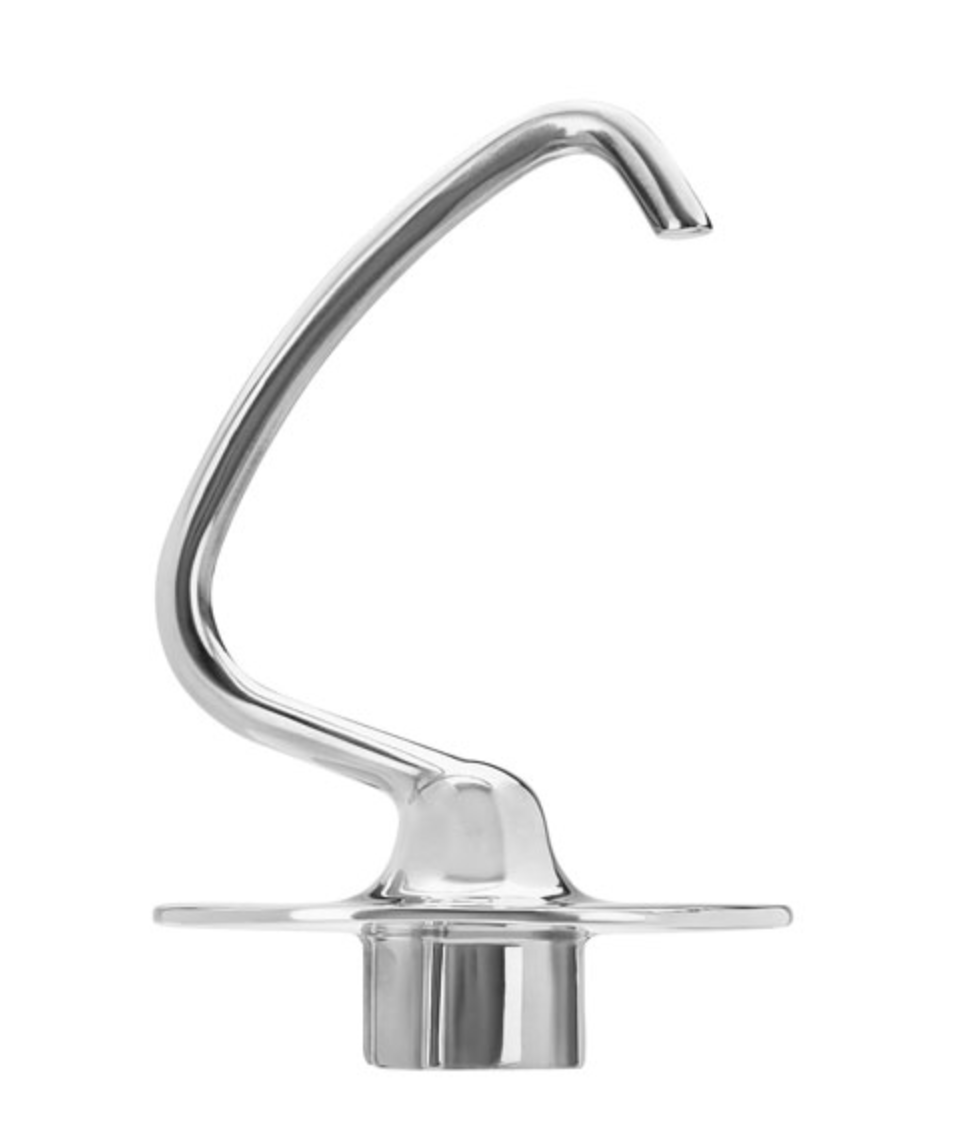 Dough hook – The dough hook is a spiral-like attachment that mimics the action of kneading dough by hand. As it works, it pulls the dough together, incorporating flour and other ingredients. You’ll see the dough slowly move from sticking to the sides of the bowl to turning into a beautiful, round ball. Once the sides of the bowl are clean, you know the dough is ready for shaping or proofing. Some people like to use a stand mixer for only a portion of the kneading process then finish by hand. Since stand mixers are very powerful, you need to be careful not to over mix when using a dough hook.
Dough hook – The dough hook is a spiral-like attachment that mimics the action of kneading dough by hand. As it works, it pulls the dough together, incorporating flour and other ingredients. You’ll see the dough slowly move from sticking to the sides of the bowl to turning into a beautiful, round ball. Once the sides of the bowl are clean, you know the dough is ready for shaping or proofing. Some people like to use a stand mixer for only a portion of the kneading process then finish by hand. Since stand mixers are very powerful, you need to be careful not to over mix when using a dough hook.
Two main types of stand mixers
There are two main types of stand mixers: tilt head and bowl lift.
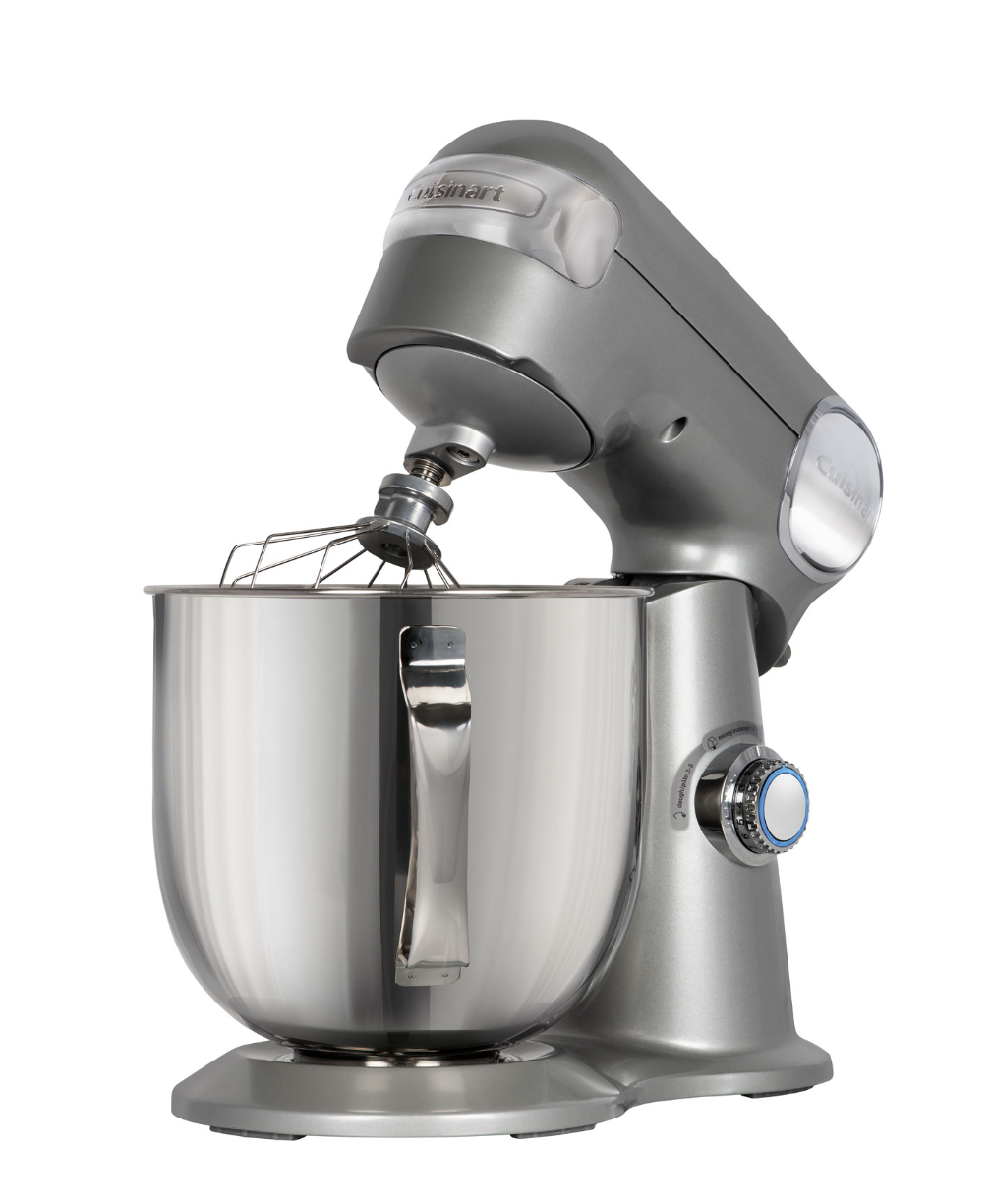 Tilt head stand mixers
Tilt head stand mixers
With tilt head stand mixers, the head of the mixer can retract backwards so you can easily add ingredients as needed. The bowl sits flat to the bottom of the base of the mixer, and is generally taller than the bowls you’d find with bowl lift stand mixers.
Bowl lift stand mixers
With a bowl lift stand mixer, you lock the usually slightly wider but less deep bowl into place, then use a crank on the side to lift the bowl up so the mixing attachment properly reaches the bottom. When in 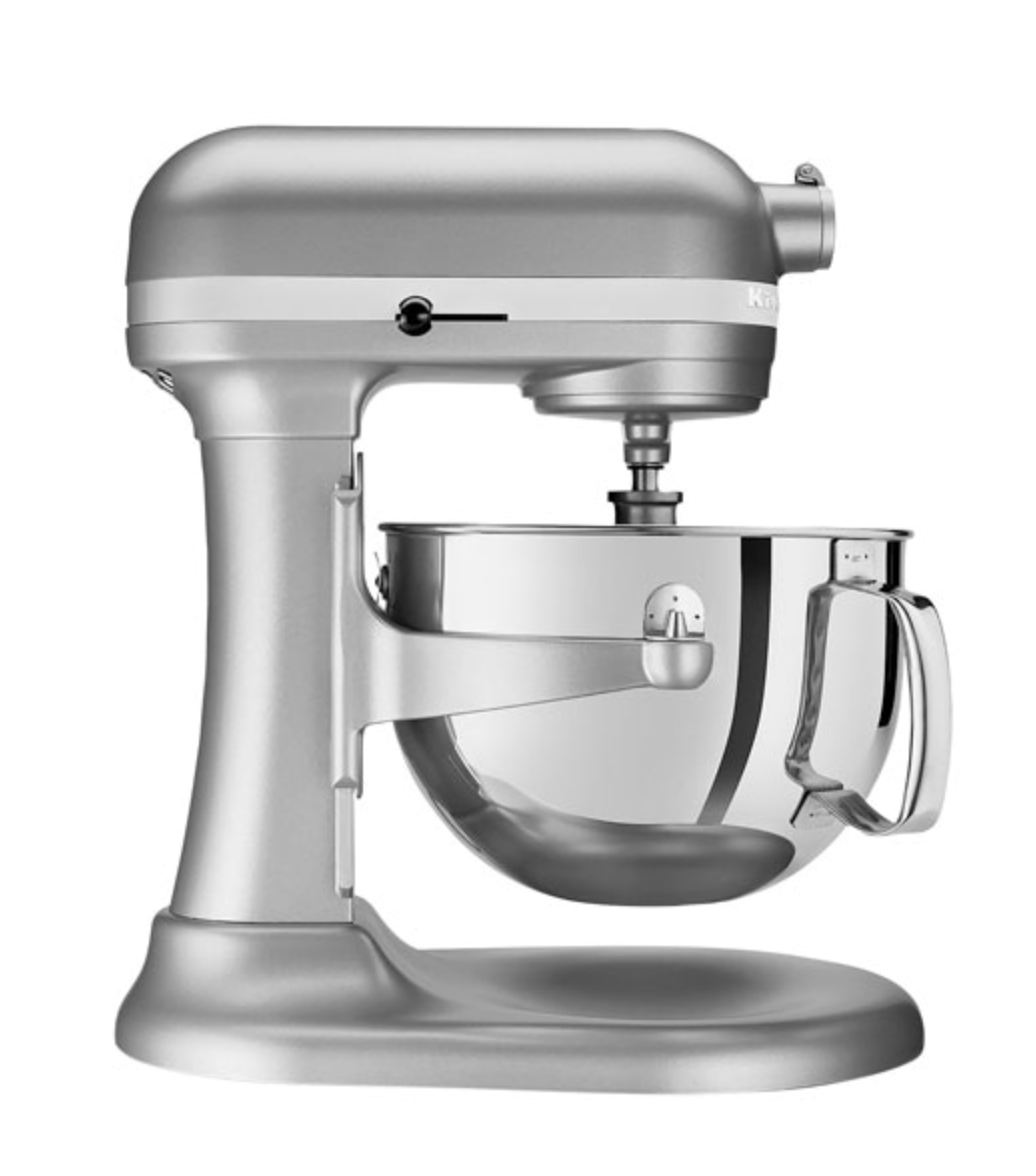 position, the bowl is not touching the bottom of the base. But when you want to add ingredients, you can stop the mixer, drop it back down, add, then lift back up and resume. These tend to be larger in size and offer greater stability, especially with thick and heavy mixtures.
position, the bowl is not touching the bottom of the base. But when you want to add ingredients, you can stop the mixer, drop it back down, add, then lift back up and resume. These tend to be larger in size and offer greater stability, especially with thick and heavy mixtures.
Which you choose is a matter of personal preference. Tilt head stand mixers tend to be more convenient and makes it easier to add ingredients. But most professional chefs prefer bowl-lift stand mixers because they often have a larger capacity and are more stable with challenging jobs.
What to look for in a stand mixer
Before choosing a stand mixer, there are a few important factors to consider. This will help ensure you select the right one to meet your personal baking and household needs.
1. Power
Stand mixers state their power in watts, and it can range from 325 watts up to as powerful as 600 watts. The higher the number, naturally, the more powerful the stand mixer. If you plan to do intense jobs, like whipping cream, making lots of batter for school bake sales or entertaining, whipping butter for shortbread, and mixing heavier and denser doughs, you’ll want the most powerful stand mixer you can get. It will work more efficiently. For infrequent, basic mixing jobs with simple things like cookie and cake batter, however, a lower-powered stand mixer might suffice.
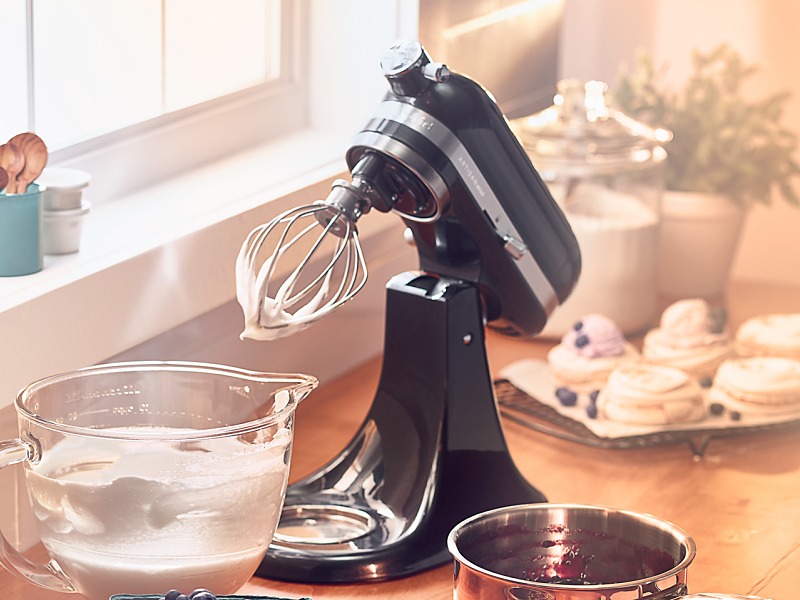 2. Speed options
2. Speed options
Stand mixers typically have about 10 speeds, and chances are, you’ll use the “stir” and 1, 2, or 3 speeds the most. But depending on the types of things you plan to make, having higher speed options could be useful. For example, if you will be aerating heavy cream, the highest stand mixer setting is probably the best one. And the higher, the better.
3. Bowl size
As noted, stand mixers come with different bowl sizes from about 3.25 to 6 quarts. Consider how big your family is and how much you would typically be making at once. If you entertain a lot, opting for a mixer with the larger size bowl would make sense. This, then, might sway you towards a bowl-lift versus tilt-head model. You will be less likely to overload the bowl when you’re making a lot. Plus, you’ll still have extra room to work with when you are making smaller batches.
4. Versatility with attachments
Stand mixers from brands like KitchenAid work with a variety of optional attachments: the stand mixer can become everything from a food processor to a meat grinder as well. If you think you might get adventurous and want to experiment with these features and functions later on, consider looking at a KitchenAid model knowing that it offers the option to use add-ons and expand the functionality of the machine.
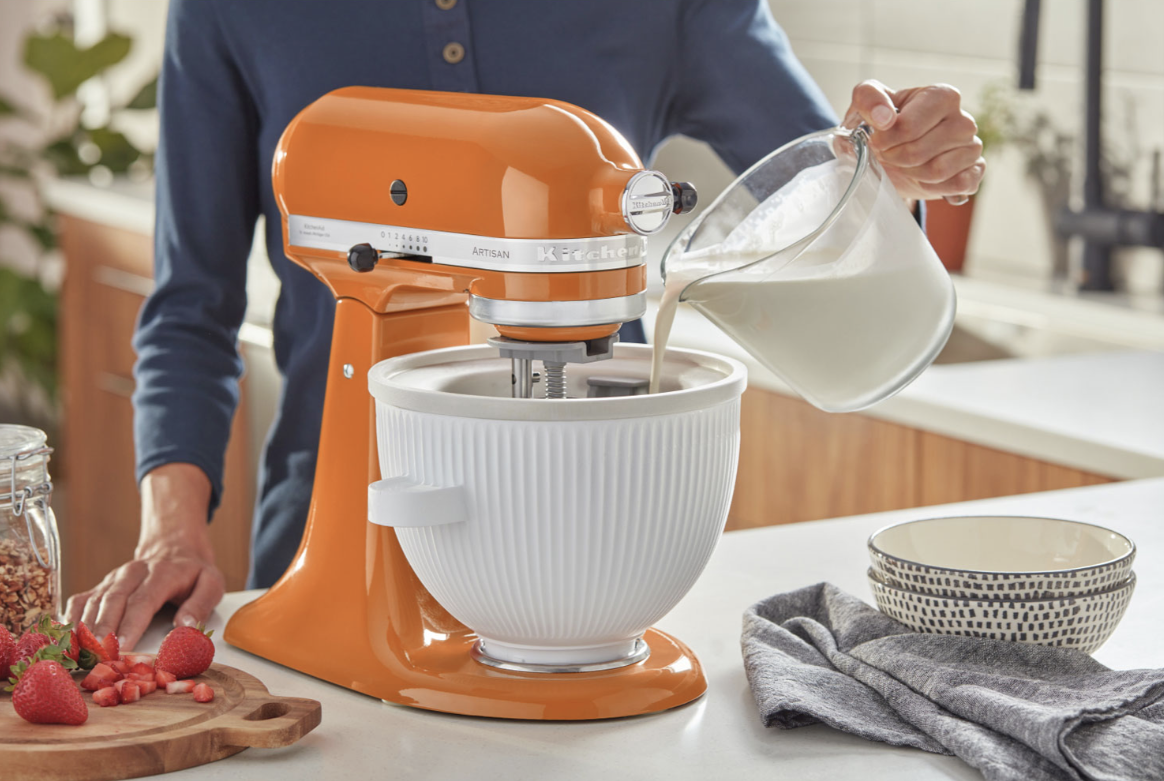 5. Colours
5. Colours
Stand mixers come in much more than the usual blacks, silvers, and whites. From stunning glossy reds to aqua greens, blues, yellows, and more, stand mixers are available in a wide variety of colours.
Consider not only the colour scheme of your kitchen but also the colours of your other home appliances, both large and small. It’s nice if you can match. If you think you might be remodeling the kitchen sometime soon, you can consider a standard colour that will match with all types of kitchen designs and colour schemes. But if you want the stand mixer to stand out, don’t be afraid to go bold.
Useful accessories for a stand mixer
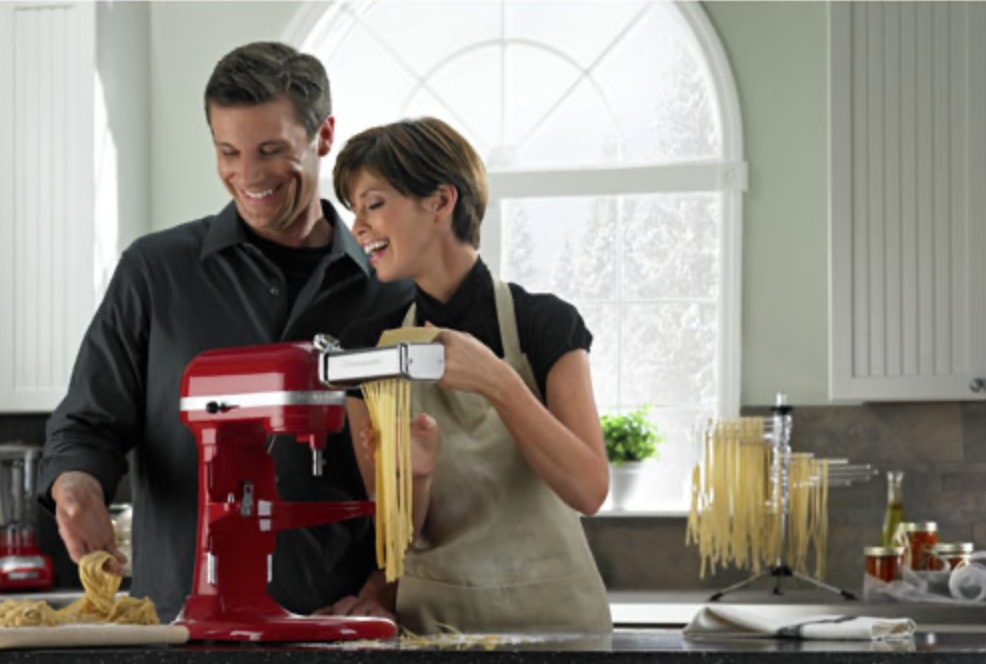
Stand mixers are the first part of the equation. You then might want to up the ante with various stand mixer attachments.
Attachments – For KitchenAid, there are a variety of stand mixer attachments you can use, and you can read more about some of the most exciting ones. Some favourites include the pasta roller and cutter set and the ice shaver.
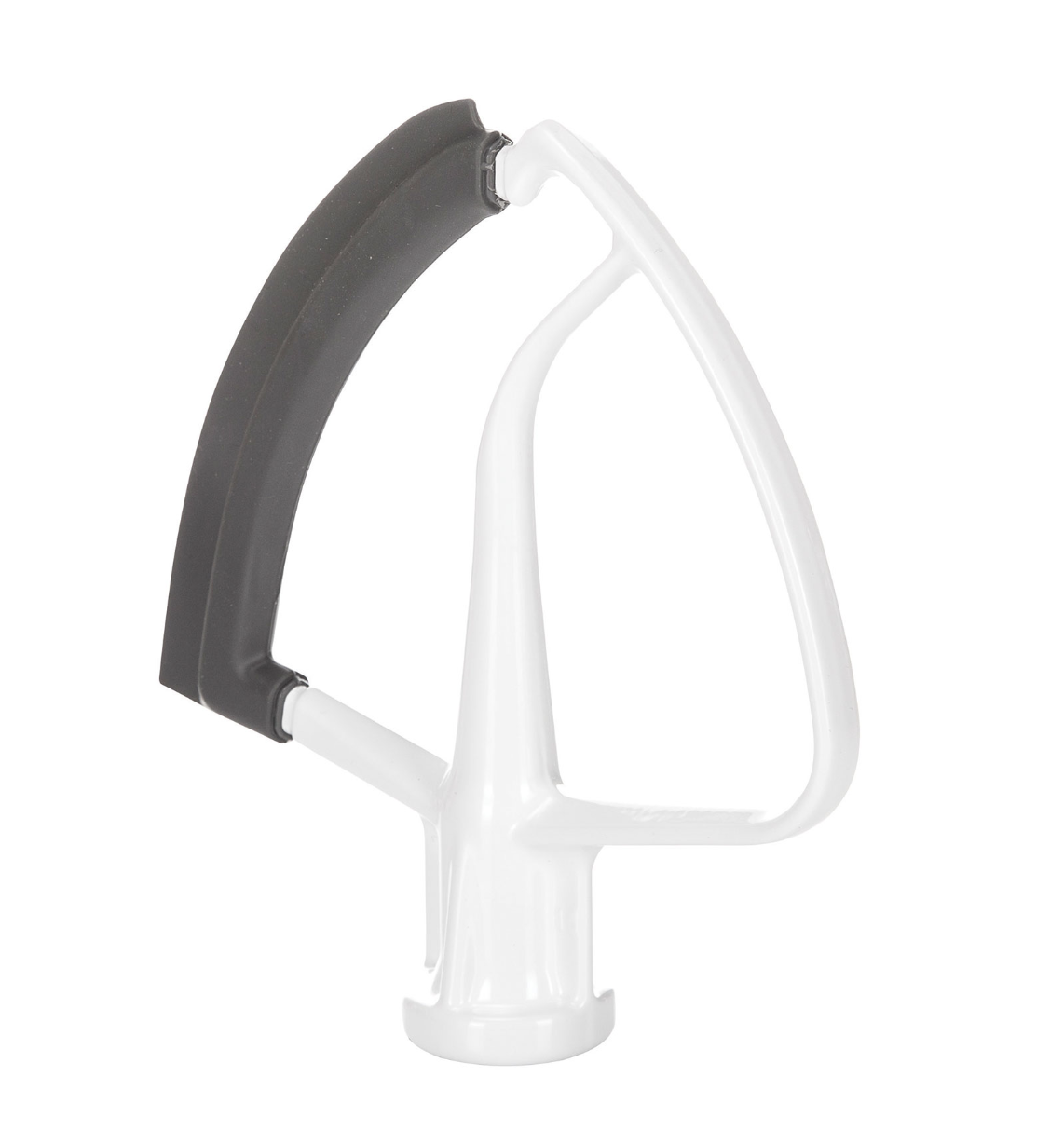 Extra mixing attachments – You can also consider a flat beater with the silicone scraper on the one side. Or upgrade to various mixing attachments made of different materials, like a stainless-steel version of the dough hook.
Extra mixing attachments – You can also consider a flat beater with the silicone scraper on the one side. Or upgrade to various mixing attachments made of different materials, like a stainless-steel version of the dough hook.
Extra bowls – There are options for extra bowls, including glass or ceramic bowls for those who prefer them, or like the look better than stainless steel. This appliance, after all, will sit on your countertop 24/7, so why not make it a showpiece? Just make sure to find one that is compatible with the specific stand mixer to buy or already own.
Pour shield – Some stand mixers work with, or even come with, a specially fitted pour shield that makes it easy to add liquid ingredients while a mix is in session. This is useful if you’re emulsifying salad dressing, for example, and want to pour oil in slowly as it mixes.
Take the next step
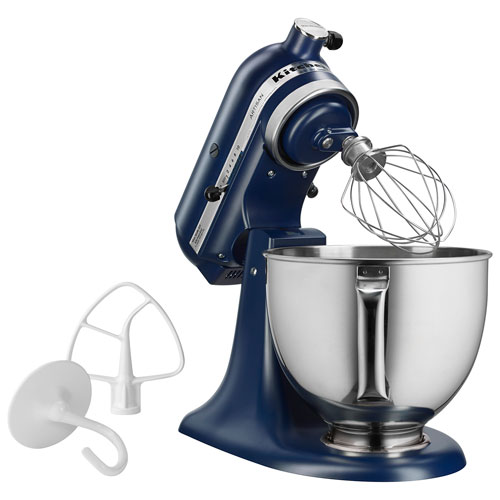 Ready to enter the exciting world of baking with a stand mixer? It will be one of the most worthwhile investments you make for the kitchen. And with so much versatility in the types, sizes, attachments, colours and styles of stand mixers, there’s one to suit every type of cook and kitchen. See a wide range of stand mixers at Best Buy Online.
Ready to enter the exciting world of baking with a stand mixer? It will be one of the most worthwhile investments you make for the kitchen. And with so much versatility in the types, sizes, attachments, colours and styles of stand mixers, there’s one to suit every type of cook and kitchen. See a wide range of stand mixers at Best Buy Online.
The post Stand mixers buying guide appeared first on Best Buy Blog.
